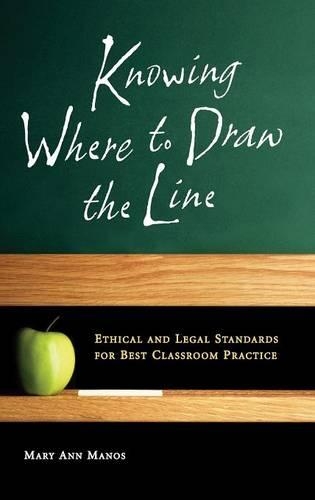
Knowing Where to Draw the Line: Ethical and Legal Standards for Best Classroom Practice
(Hardback)
Publishing Details
Knowing Where to Draw the Line: Ethical and Legal Standards for Best Classroom Practice
By (Author) Mary Ann Manos
Bloomsbury Publishing PLC
Praeger Publishers Inc
30th September 2006
United States
Classifications
Professional and Scholarly
Non Fiction
Teaching skills and techniques
344.73078
Physical Properties
Hardback
168
Description
Many teachers in public schools find themselves increasingly unsure of what the law expects of them in the classroom. The general public and government regulators are holding them to higher and stricter standers of conduct, but their educational preparation has not kept up with the changing environment. Knowing Where to Draw the Line: Ethical and Legal Standards for Best Classroom Practice is an ideal guide for teacher education programs, offering a comprehensive account of the legal information that will arm teachers for legal survival in the classroom. Organized for both easy reference and thorough examination, Knowing Where to Draw the Line: Ethical and Legal Standards for Best Classroom Practice instructs teachers on how to deal with students, parents, administrators, and local communities, covering an exhaustive list of legal issues including: Sexual harassment, Discipline, Contract negotiations, Liability, and Medical Concerns. In addition, Knowing Where to Draw the Line: Ethical and Legal Standards for Best Classroom Practice highlights a number of court cases and uses hypothetical cases to further aid teachers in understanding these vital concerns.
Reviews
The text is current, relevant, without obvious omissions, and interesting because of its contemporary applications and conversational writing.Defining topics using ordinary educational situations before stating case law allows citations to be presented in context, and case studies applying cited laws using contemporary, problematic dilemmas with detailed rationales explaining solutions also promote clarity and compliance. * VOYA *
One out of every five teachers will be either the plaintiff, the defendant, or a grievant in an action that is job related! From that startling starting point, Manos and several Illinois colleagues begin their discussion of what the required law course in teacher education should cover, the importance of being familiar with state ethics codes, and drawing the line ethically/legally with students, parents, administrators, and the community. Chapters include cases in point and critical thinking questions. The appendix presents the codes of ethics of the National Education Association, American Association of School Administrators, and related groups. * Reference & Research Book News *
Author Bio
Mary Ann Manos is Associate Professor in Teacher Education at Bradley University in Peoria, Illinois. She is a 30-year veteran of the classroom and a 2000 National Board for Professional Teaching Standards certified teacher in Early Adolescent English/Language Arts. She has taught elementary school through to the college level in both public and private settings. Her work at the university level includes teaching middle school methods and education foundation courses, as well as gifted education. She served for four years as the Director of the Bradley University Institute for Gifted and Talented Youth. Dr. Manos also works with the International Study Abroad programs at Bradley.
